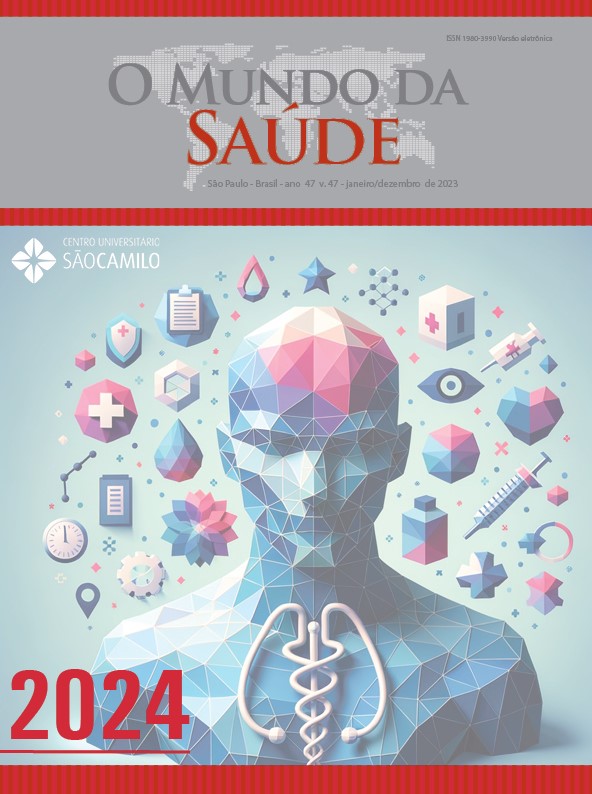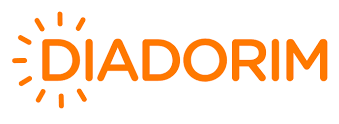Pobreza menstrual: una revisión sistemática para identificar poblaciones vulnerables y herramientas de medición
DOI:
https://doi.org/10.15343/0104-7809.202448e16152024PPalabras clave:
Pobreza Menstrual, Período Menstrual, Menstruación, Salud Menstrual, Higiene MenstrualResumen
El objetivo fue presentar una síntesis de la literatura sobre el tema de la "pobreza menstrual". La búsqueda incluyó las bases de datos PubMed/MEDLINE, LILACS, SCIELO Brasil y Google Scholar como fuentes. Parejas de investigadores realizaron la revisión de acuerdo con las directrices PRISMA y evaluaron la calidad de las evidencias utilizando la herramienta Mixed Methods Appraisal Tool. Se identificaron un total de 2.457 publicaciones, de las cuales 22 fueron incluidas en la revisión. El concepto emergente de esta revisión sugiere que "la pobreza menstrual corresponde a una condición multidimensional, simbolizada materialmente por la falta de productos de cuidado genital, reflejando principalmente la vulnerabilidad psicosocial de las personas que menstrúan, resultante de la privación de acceso a bienes fundamentales necesarios para una vida digna y respetuosa." La edad y las condiciones socioeconómicas son los principales marcadores de vulnerabilidad ante la "pobreza menstrual". Una amplia gama de cuestiones explora el tema, concentrándose principalmente en el acceso, costo y disponibilidad de productos de higiene durante la menstruación. Al sintetizar los conceptos y hallazgos de los estudios incluidos en esta revisión, fue posible confirmar que los factores socioeconómicos desfavorables son los indicadores más significativos de la pobreza menstrual. Aunque el fenómeno de la pobreza menstrual se manifiesta como una privación de bienes esenciales y falta de dignidad humana, los instrumentos de investigación y las soluciones propuestas se han centrado predominantemente en el acceso y suministro de productos de higiene. Este enfoque restringido ofrece una visibilidad limitada a las cuestiones más amplias de desigualdad e injusticia social que sustentan la pobreza menstrual.
Descargas
Citas
World Health Organization. Data Platform-Indicators. Maternal, newborn, child and adolescent health and ageing. [internet] 2022; [acesso 11 dez 2022]. Disponível em: https://platform.who.int/data/maternal-newborn-child-adolescent-ageing/indicator-explorer-new/mca/women-of-reproductive-age-(15-49-years)-population-(thousands)
Sommer M, Mason DJ. Period Poverty and Promoting Menstrual Equity. JAMA Health Forum. 2021 Aug 3; 2(8): e213089. Disponível em: https://doi.org/10.1001/jamahealthforum.2021.308
Critchley HOD, Babayev E, Bulun SE, Clark S, Garcia-Grau I, Gregersen PK et a. Menstruation: science and society. Am J Obstet Gynecol. 2020 Nov; 223(5): 624-664. Disponível em: https://doi.org/10.1016/j.ajog.2020.06.004
United Nations. United Nations-Women. Period Poverty. Why millions of girls and women cannot afford their periods [internet] 2024; [acesso em 01 de setembro de 2024]. Disponível em: https://www.unwomen.org/en/news-stories/explainer/2024/05/ period-poverty-why-millions-of-girls-and-women-cannot-afford-their-periods
Weiss-Wolf J. U.S. Policymaking to address menstruation: advancing an equity agenda [Chapter 41]. In: Bobel C et al. [editors]. The Palgrave Handbook of Critical Menstruation Studies [Internet]. Singapore: Palgrave Macmillan; 2020. [acessado em 20 de dezembro de 2023]. Disponível em: https://scholarship.law.wm.edu/cgi/viewcontent.cgi?article=1501&context=wmjowl
Crawford BJ, Johnson ME, Karin ML, Strausfeld L, Waldman EG. The Ground on Which We All Stand: A Conversation About Menstrual Equity Law and Activism. Mich J GENDER & L. 2020; 26 (2): 341-388. Disponível em: https://repository.law. umich.edu/mjgl/vol26/iss2/4?utm_source=repository.law.umich.edu%2Fmjgl%2Fvol26%2Fiss2%2F4&utm_medium=PDF&utm_ campaign=PDFCoverPages
Kaur R, Kaur K, Kaur R. Menstrual Hygiene, Management, and Waste Disposal: Practices and Challenges Faced by Girls/ Women of Developing Countries. J Environ Public Health. 2018 Feb 20; 2018:1730964.Disponível em: https://doi. org/10.1155/2018/1730964
Riley AH, Slifer L, Hughes J, Ramaiya A. Results from a literature review of menstruation-related restrictions in the United States and Canada. Sex Reprod Health. 2020 Oct; 25:100537. Disponível em: https://doi.org/10.1016/j.srhc.2020.100537
Popay J, Roberts H, Sowden A, Petticrew M, Arai L, Rodgers M et al. Guidance on the conduct of narrative synthesis in systematic reviews. [acessado em 30 de agosto de 2021]. Disponível em: http://dx.doi.org/10.13140/2.1.1018.4643
Liberati A, Altman DG, Tetzlaff J, Mulrow C, Gøtzsche PC, Ioannidis JP et al. The PRISMA statement for reporting systematic reviews and meta-analyses of studies that evaluate health care interventions: explanation and elaboration. Ann Intern Med 2009 Aug 18;151(4):W65-94. Disponível em: https://doi.org/10.7326/0003-4819-151-4-200908180-00136
Hong QN, Pluye P, Fàbregues S, Bartelett G, Boardman F, Cargo M et al. Mixed Methods Appraisal Tool (MMAT) [internet]– Version 2018 – User guide. [accessado em 30 de outubro de 2022]. Disponível em: http://mixedmethodsappraisaltoolpublic. pbworks.com/
Austrian K, Kangwana B, Muthengi E, Soler-Hampejsek E. Effects of sanitary pad distribution and reproductive health education on upper primary school attendance and reproductive health knowledge and attitudes in Kenya: a cluster randomized controlled trial. Reprod Health. 2021 Aug 31; 18(1):179.Disponível em: https://doi.org/10.1186/s12978-021-01223-7
Montgomery P, Hennegan J, Dolan C, Wu M, Steinfield L, Scott L. Menstruation and the Cycle of Poverty: A Cluster Quasi Randomised Control Trial of Sanitary Pad and Puberty Education Provision in Uganda. PLoS One. 2016 Dec 21; 11(12):e0166122. Disponível em: https://doi.org/10.1371/journal.pone.0166122
Parajuli SB, Mishra A, Luitel A, Sherpa TW, KC H. The Cost of Menstrual Cycle in Young Nepali Women: A Cross-Sectional Study. J Lumbini Med Coll [Internet]. 2021 Dec.2 [cited 2024 Sep 6]; 9(2):5 pages. Disponível em: https://www.nepjol.info/index. php/JLMC/article/view/47189
Olawade DB, Adeniji YJ, Wada OZ, Akosile OR, Odetayo A, Anuforo GO et al. Menstrual hygiene management amidst COVID-19 pandemic in Nigeria’s epicentre: the reality of girls and women in a low-income community. Int J Trop Dis Health 2021; 42(17): 22-29. Disponível em: http://dx.doi.org/10.9734/IJTDH/2021/v42i1730529
Krenz A, Strulik H. The impact of menstruation hygiene management on work absenteeism of women in Burkina Faso. Econ Hum Biol. 2021 Dec; 43: 101067. Disponível em: https://doi.org/10.1016/j.ehb.2021.101067
Soeiro RE, Rocha L, Surita FG, Bahamondes L, Costa ML. Period poverty: menstrual health hygiene issues among adolescent and young Venezuelan migrant women at the northwestern border of Brazil. Reprod Health. 2021 Nov 27;18 (1):238. Disponível em: https://doi.org/10.1186/s12978-021-01285-7
Pascual Armendáriz N. Análisis de la pobreza mestrual en edad escolar. Lecciones aprendidas del caso de Reino Unido y su aplicación a España. [dissertação]. Castellón – Espanha: Universitat Jaume I; 2021. [acessado em 05 de setembro de 2024]. Disponível em: http://hdl.handle.net/10234/194362
Rossouw L, Ross H. Understanding Period Poverty: Socio-Economic Inequalities in Menstrual Hygiene Management in Eight Low- and Middle-Income Countries. Int J Environ Res Public Health. 2021 Mar 4;18(5):2571. Disponível em: https://doi. org/10.3390%2Fijerph18052571
Cardoso LF, Scolese AM, Hamidaddin A, Gupta J. Period poverty and mental health implications among college-aged women in the United States. BMC Womens Health. 2021 Jan 6;21(1):14. Disponível em: https://doi.org/10.1186/s12905-020-01149-5
Keiser V, Parlier-Ahmad AB, Kuhlmann AS, Martin CE. Menstrual Hygiene Needs Among Women Undergoing Substance Use Disorder Treatment. Obstet Gynecol. 2020 Oct; 136(4): 768-770. Disponível em: https://doi.org/10.1097/aog.0000000000004042
Alam MU, Luby SP, Halder AK, Islam K, Opel A, Shoab AK et al. Menstrual hygiene management among Bangladeshi adolescent schoolgirls and risk factors affecting school absence: results from a cross-sectional survey. BMJ Open. 2017 Jul 9;7(7):e015508. Disponível em: https://doi.org/10.1136%2Fbmjopen-2016-015508
Brito MAPR. Pobreza menstrual e políticas públicas para mulheres e meninas. [dissertação]. Cidade de Goiás (GO): Universidade Federal de Goiás; 2021. [acessado em 05 de setembro de 2024]. Disponível em: http://repositorio.bc.ufg.br/ handle/ri/19809
Ennis A, Donovan-Hall L, Standing K, Mistry V. Lifting the lid on period poverty in higher education: a student engagement perspective. Innovations in Practice, 2020; 14 (1): 23-31. Disponível em: http://dx.doi.org/10.24377/LJMU.iip.vol14iss1article487
Wall LL, Teklay K, Desta A, Belay S. Tending the 'monthly flower:' a qualitative study of menstrual beliefs in Tigray, Ethiopia. BMC Womens Health. 2018 Nov 13;18(1):183. Disponível em: https://doi.org/10.1186%2Fs12905-018-0676-z
Rheinländer T, Gyapong M, Akpakli DE, Konradsen F. Secrets, shame and discipline: School girls' experiences of sanitation and menstrual hygiene management in a peri-urban community in Ghana. Health Care Women Int. 2019 Jan; 40(1): 13-32. Disponível em: https://doi.org/10.1080/07399332.2018.1444041
Girod C, Ellis A, Andes KL, Freeman MC, Caruso BA. Physical, Social, and Political Inequities Constraining Girls' Menstrual Management at Schools in Informal Settlements of Nairobi, Kenya. J Urban Health. 2017 Dec;94(6):835-846. Disponível em: https://doi.org/10.1007/s11524-017-0189-3
Hennegan J, Dolan C, Steinfield L, Montgomery P. A qualitative understanding of the effects of reusable sanitary pads and puberty education: implications for future research and practice. Reprod Health. 2017 Jun 27;14(1):78. Disponível em: https:// doi.org/10.1186/s12978-017-0339-9.
Secor-Turner M, Schmitz K, Benson K. Adolescent Experience of Menstruation in Rural Kenya. Nurs Res. 2016 Jul Aug;65(4):301-5. Disponível em: https://doi.org/10.1097/nnr.0000000000000161
Crichton J, Okal J, Kabiru CW, Zulu EM. Emotional and psychosocial aspects of menstrual poverty in resource-poor settings: a qualitative study of the experiences of adolescent girls in an informal settlement in Nairobi. Health Care Women Int. 2013 Oct;34(10):891-916. Disponível em: https://doi.org/10.1080/07399332.2012.740112
Sebert Kuhlmann A, Peters Bergquist E, Danjoint D, Wall LL. Unmet Menstrual Hygiene Needs Among Low-Income Women. Obstet Gynecol. 2019 Feb;133(2):238-244. Disponível em: https://doi.org/10.1097/aog.0000000000003060.
Ndlovu E, Bhala E. Menstrual hygiene - A salient hazard in rural schools: A case of Masvingo district of Zimbabwe. Jamba. 2016 Jan 13;8(2):204. Disponível em: https://doi.org/10.4102/jamba.v8i2.204
Boosey R, Prestwich G, Deave T. Menstrual hygiene management amongst schoolgirls in the Rukungiri district of Uganda and the impact on their education: a cross-sectional study. Pan Afr Med J. 2014 Nov 7;19:253. Disponível em: https://doi. org/10.11604/pamj.2014.19.253.5313
Caruso BA. WASH in schools empowers girls’ education: tools for assessing menstrual hygiene management in schools. New York: UNICEF; 2013. [acessado em 11 de dezembro de 2022]. Disponível em: https://www.researchgate.net/publication/270880911_ WASH_in_Schools_Empowers_Girls'_Education_Tools_for_Assessing_Menstrual_Hygiene_Management_in_Schools
Descritores em Ciências da Saúde: DeCS [Internet]. ed. 2017. São Paulo (SP): BIREME / OPAS / OMS. 2017 [cited 2017 Jun 13]. Disponível em: http://decs.bvsalud.org
Carneiro MM. Menstrual poverty: enough is enough. Women Health. 2021 Sep; 61(8):721-722. Disponível em: https://doi. org/10.1080/03630242.2021.1970502
Thapa S, Bhattarai S, Aro AR. 'Menstrual blood is bad and should be cleaned': A qualitative case study on traditional menstrual practices and contextual factors in the rural communities of far-western Nepal. SAGE Open Med. 2019 May 13;7:2050312119850400. Disponível em: https://doi.org/10.1177/2050312119850400
Tan DA, Haththotuwa R, Fraser IS. Cultural aspects and mythologies surrounding menstruation and abnormal uterine bleeding. Best Pract Res Clin Obstet Gynaecol. 2017 Apr;40:121-133. Disponível em: https://doi.org/10.1016/j.bpobgyn.2016.09.015
Michel J, Mettler A, Schönenberger S, Gunz D. Period poverty: why it should be everybody’s business. J Glob Health Rep 2022 Feb 22; 6:1-4. Disponível em: https://doi.org/10.29392/001c.32436
Lo Forte C, Plesons M, Branson M, Chandra-Mouli V. What can the global movement to end child marriage learn from the implementation of other multi-sectoral initiatives? BMJ Glob Health. 2019 Oct 17;4(5):e001739. Disponível em: https://doi. org/10.1136/bmjgh-2019-001739
Schmitt ML, Booth K, Sommer M. A Policy for Addressing Menstrual Equity in Schools: A Case Study From New York City, U.S.A. Front Reprod Health. 2022 Jan 28;3:725805. Disponível em: https://doi.org/10.3389/frph.2021.725805
United Nations. Department of Economic and Social Affairs. Sustainable Development. Transforming our world. [internet] 2023; The 2030 Agenda for sustainable development goals. United Nations. New York; 2015. [acessado em 27 de setembro de 2023]. Disponível em: https://sdgs.un.org/2030agenda
Cousins S. Rethinking period poverty. Lancet. 2020 Mar 14;395(10227):857-858. Disponível em: https://doi.org/10.1016/ s0140-6736(20)30605-x
UNPFA - United Nations Population Funding. Menstruation and human rights – frequently asked questions. [internet] 2022; [acessado em 01 de março de 2023]. Disponível em: https://www.unfpa.org/menstruationfaq
The Lancet Child Adolescent Health. Normalising menstruation, empowering girls. Lancet Child Adolesc Health. 2018 Jun; 2(6):379. Disponível em: https://doi.org/10.1016/s2352-4642(18)30143-3
Descargas
Publicado
Cómo citar
Número
Sección
Licencia
Derechos de autor 2024 O Mundo da Saúde

Esta obra está bajo una licencia internacional Creative Commons Atribución 4.0.






























